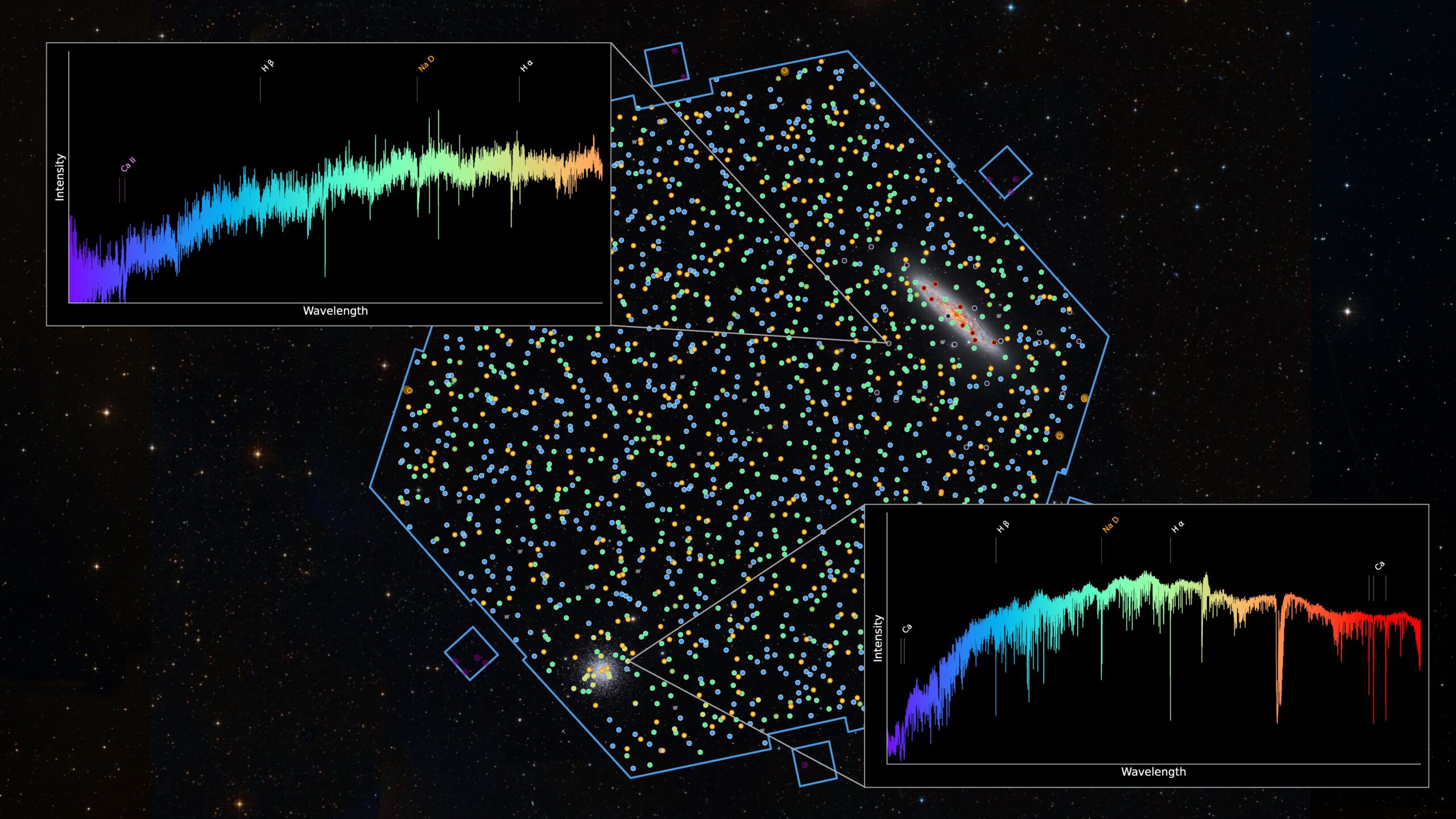By analysing the detailed rainbow-like colours of thousands of objects every 10-20 minutes, 4MOST will build a catalogue of temperatures, chemical compositions, velocities and many more physical parameters of tens of millions of objects spread…

By analysing the detailed rainbow-like colours of thousands of objects every 10-20 minutes, 4MOST will build a catalogue of temperatures, chemical compositions, velocities and many more physical parameters of tens of millions of objects spread…